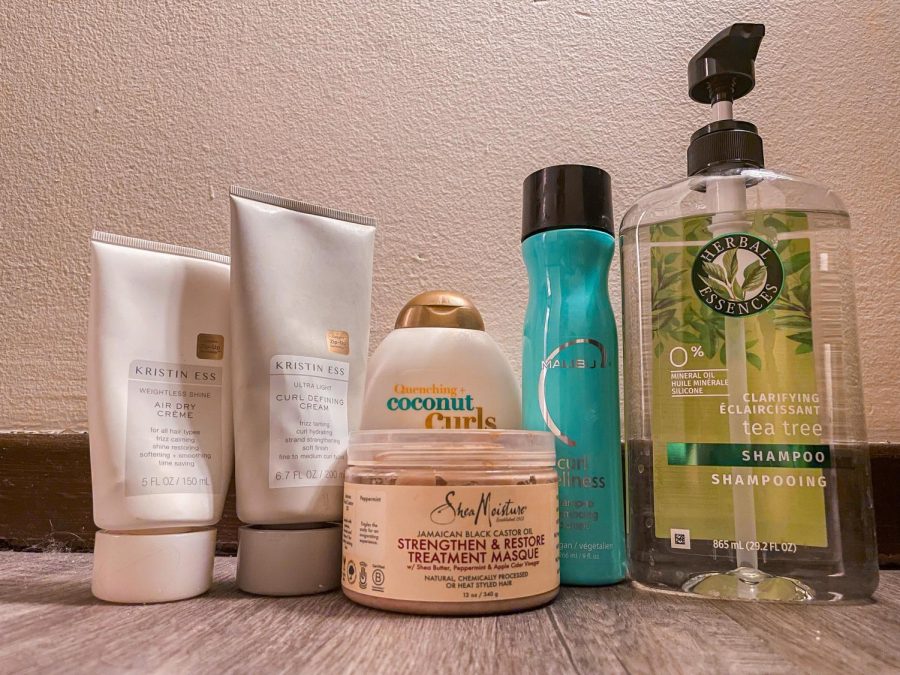Hair care needs more diversity
Companies often limit the amount of products they have to accommodate different types of hair.
February 17, 2022
Haircare should be more diverse.
Hundreds of bottles of shampoo and conditioner line the aisles of Walgreens and Target. Not one of them is suited for my fine, curly hair.
That’s not to say that products suited for curly hair aren’t on the shelves. Since the rise of the “curly girl method” in the last few years, stores have made more prominent displays of curl-friendly products.
Target has an entire section on their website (and often in stores, too) that’s completely devoted to curly and textured hair products, including styling gels, curl creams and clarifying shampoos.
Walmart has similar displays, and their website even allows customers to shop by curl type to find products that might suit them.
Evidently, diversity is becoming a bigger issue in hair care, and, technically, businesses are doing something about it.
The problem is, not all curly-hair products actually work for every curly-haired girl.
Because of my hair composition, most curl products don’t work for me. They either leave my hair too oily or they dry it out. Instead of buying the popular Shea Moisture or Mielle curl products, I’m left ordering expensive products from companies that specifically promote specialized hair care — and yes, I have bought a $17 bottle of shampoo.
That’s another problem that straight-haired people might not consider: the cost.
Because only certain products work for my hair, I have to pay the price or ruin my hair. Even if I could use some of the more mainstream curl-friendly products, those are usually more expensive than other hair products.
I did buy a $17 bottle of shampoo, but what other options did I have?
It’s not uncommon for products to cost upwards of $50 for one bottle of shampoo. And that’s not even considering the fact that curly-haired people don’t only need shampoo. We also use conditioner, co-wash shampoos (which are different from regular shampoos), hair masks and oils.
Haircare adds up when you can’t just buy the first thing you grab off the shelf.
The lack of diversity isn’t just an issue with the products lining the shelves in stores. Many hairstylists also don’t know how to properly cut, style or care for customers with curly or textured hair.
Finding a stylist who can properly do your hair can be a time commitment, especially in less diverse areas.
Customers clearly want diverse beauty products. While companies have expanded their horizons (and shelf space) to fit products that work for a more diverse set of people, customers with curly and textured hair still don’t have the privilege of easily finding products that work for them, especially if they’re on a budget.
There certainly are options for curly-haired people. However, companies can do better. More affordable and easy-to-find options should be the standard.







